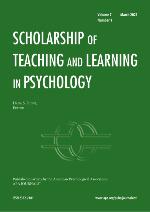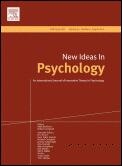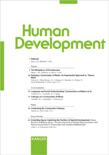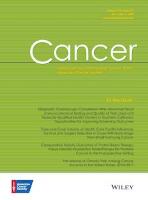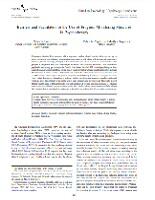Humanities and Social Sciences
Related Works
Content type
Digital Document
Abstract
In predicting treatment compliance in individuals with severe mental illness, research has focused on variables such as substance abuse, personality, history of child abuse, and symptomatology, although these relationships have not been investigated in great detail in individuals at the onset of mental illness. To better understand these correlates of treatment compliance, two samples were examined: a sample of 117 individuals presenting with a first episode of psychosis and a more chronic forensic sample of 65 participants recruited from a psychiatric hospital. These samples were investigated for service engagement in terms of violence history, substance abuse, symptom severity, psychopathic traits and history of childhood abuse. Linear regressions performed for the first episode sample revealed that childhood physical abuse was the strongest predictor of poor service engagement, followed by problems with alcohol, a history of physical violence, any history of violence and higher psychopathic traits. Linear regression revealed for the forensic group that a lower level of service engagement was most strongly predicted by a history of childhood abuse and a higher score on the Brief Psychiatric Rating Scale (BPRS). Results are presented in light of the existing literature and clinical implications are discussed.
Origin Information
Content type
Digital Document
Abstract
LaunchPad is an interactive online textbook technology supplement developed by MacMillan Education that contains several practice tests designed to capitalize on the testing effect, the tendency for practice testing to enhance learning. The description of LaunchPad on MacMillan Education’s website implies that it improves student learning. However, the evidence for this is limited. Consequently, I evaluated LaunchPad so that college and university educators can make an evidence-based decision as to whether it improves student learning. I compared 3 groups of introductory psychology students: a group not assigned any part of LaunchPad, a group assigned LearningCurve, LaunchPad’s primary practice testing component, and a group assigned LearningCurve plus 2 other practice tests within LaunchPad. The dependent variable was average percent correct on multiple-choice tests given in class. I also evaluated the effect of student utilization of LaunchPad on the dependent variable. LearningCurve alone did not have any effect on the dependent variable, even when students utilized it to a reasonable degree. In contrast, LearningCurve plus the 2 other practice tests had a significant effect on the dependent variable and the effect was greater for students who utilized LaunchPad to a greater degree, even when grade point average was controlled.
Origin Information
Content type
Digital Document
Abstract
The mesostriatal dopamine (DA) system is known to play a vital role in extrapyramidal motor responses, and animals with a unilateral 6-hydroxydopamine (6-OHDA) lesion of this system have proved useful in studying the behavioral and neurobiological effects of DA depletion. Less is known about the role of this system in modulating emotional responses, although a number of lines of evidence suggest that dopamine influences emotional behavior. During the course of a study involving rats that had a unilateral 6-OHDA lesion, we discovered a hemispheric asymmetry in the levels of corticotropin releasing hormone (CRH) mRNA in the central nucleus of the amygdala (CEA). The present study was performed in order to determine (1) if the lesion resulted in a decrease in CRH mRNA, and/or if there was upregulation on the intact side, (2) if a similar imbalance in CRH mRNA was observed in other brain regions and (3) if levels of other neuropeptide mRNAs were affected by the lesion. Adult male Sprague–Dawley rats were left unoperated or were pretreated with desipramine and then injected unilaterally with 6-OHDA into the medial forebrain bundle to lesion the ascending mesostriatal DA neurons. Animals were killed 15–31 days following surgery and brain sections processed for CRH, neurotensin and enkephalin mRNAs by in situ hybridization. Levels of CRH and neurotensin mRNAs were decreased on the lesioned side in the CEA and oval nucleus of the BST (BSTov) relative to the intact side and to unoperated controls. Levels of enkephalin mRNA in these regions were not affected by the lesion. These effects appeared specific, because the lesion did not alter CRH mRNA expression in the ventral BST, paraventricular nucleus of the hypothalamus or cortex or neurotensin mRNA expression in the CA1 region of the hippocampus. In contrast, and consistent with previous reports, levels of neurotensin and enkephalin mRNAs were upregulated on the lesioned side of the striatum. This study provides evidence that the mesostriatal DA system regulates CRH and neurotensin mRNA in the BSTov and CEA, suggesting that dopamine may be an important modulator of CRH and neurotensin function within these nuclei. Although the precise mechanisms are not clear, and the involvement of noradrenergic systems cannot be precluded, data are consistent with the idea that dopamine, released in response to a stressful experience for example, interacts with CRH and neurotensin in the extended amygdala to affect emotional responsiveness.
Origin Information
Content type
Digital Document
Abstract
One of the most intriguing aspects of adaptive behavior involves the inference of regularities and rules in ever-changing environments. Rules are often deduced through evidence-based learning which relies on the prefrontal cortex (PFC). This is a highly dynamic process, evolving trial by trial and therefore may not be adequately captured by averaging single-unit responses over numerous repetitions. Here, we employed advanced statistical techniques to visualize the trajectories of ensembles of simultaneously recorded medial PFC neurons on a trial-by-trial basis as rats deduced a novel rule in a set-shifting task. Neural populations formed clearly distinct and lasting representations of familiar and novel rules by entering unique network states. During rule acquisition, the recorded ensembles often exhibited abrupt transitions, rather than evolving continuously, in tight temporal relation to behavioral performance shifts. These results support the idea that rule learning is an evidence-based decision process, perhaps accompanied by moments of sudden insight.
Origin Information
Content type
Digital Document
Abstract
Previous research on subtypes of batterers has revealed at least two distinct types of batterers. One group (Type 1) demonstrates suppressed physiological responding during conflicts with their wives, tends to use violence in nonintimate relationships and manifests Millon Clinical Multiaxial Inventory (MCMI-II) scale elevations on the Antisocial and Aggressive-Sadistic scales. The second group (Type 2) manifests violence in the intimate relationship only and reports dysphoria. The current study extends our knowledge of these two groups by using a cluster analysis to assess personality disorder and relating the results to each group’s attachment style, anger, trauma scores, and scores on a self-report of Borderline Personality Organization (BPO). An instrumental group (Type 1) showed an Antisocial-Narcissistic-Aggressive profile on the MCMI-II and reported more severe physical violence. An impulsive group (Type 2) showed a mixed profile on the MCMI-II with Passive-Aggressive, Borderline, and Avoidant elevations, high scores on a self-report of BPO, higher chronic anger, and Fearful attachment. Both types of abusive men reported a Preoccupied attachment style, but only the Impulsive men reported an accompanying Fearful attachment style.
Origin Information
Content type
Digital Document
Abstract
We argue that developmental robotics, in its integration of developmental psychology and robotics, has the potential to encounter unexpected and unexamined conceptual difficulties. In particular, the various uses of embodiment and shared intentionality single out certain robots and behaviors as more or less relevant for the modeling of social cognition. As these terms have relatively orthogonal histories, there is no account for how their use will interact to shape methodology. We provide a brief discussion of how they may do so. Moreover, theorists often avoid explicit endorsement of some use or another. Although this agnosticism is understandable, we use the model of Dominey and Warneken (2011) as an illustrative example of why it is potentially dangerous. While Dominey and Warneken have succeeded in encouraging theorists to adopt clearer formulations of shared intentionality, their model suffers from important difficulties in interpretation, which, we argue, are a consequence of their uses of embodiment and shared intentionality respectively.
Origin Information
Content type
Digital Document
Abstract
The core knowledge (CK) account of human development ascribes higher-order cognition to infants on the basis of looking time measures. In this paper, we investigate the conceptual foundations of this account through an examination of the preferential looking paradigm. We focus on the use of this paradigm in social cognitive and morality research, which involves ascriptions of expectation, surprise, preference, belief understanding, and moral judgment to infant looking behavior. We compare CK researchers’ usage of these terms with everyday usage, and conclude that the application of belief and morality to infant looking behavior is overzealous. Based on these considerations, we argue that a developmental systems approach may provide a more appropriate theoretical framework for studying the development of such capacities.
Origin Information
Content type
Digital Document
Abstract
Male rats carrying the testicular feminization mutation (Tfm-affected males) are insensitive to androgens, resulting in a female-typical peripheral phenotype despite possession of inguinal testes that are androgen secretory. Androgen-dependent neural and behavioral processes may likewise show atypical sexual differentiation. Interestingly, these mutant rats display elevated serum corticosterone, suggesting a chronic anxiety phenotype and dysregulated hypothalamic–pituitary–adrenal axis. In order to understand if elevated anxiety-like behavior is a possible mediating variable affecting the display of certain androgen-dependent behaviors, we compared the performance of Tfm-affected males to wild type males and females in the elevated plus maze (EPM). Two well-established indicators of anxiety-like behavior in the EPM were analyzed: total percentage of time spent on the open arms, and the percentage of open arm entries. We also analyzed the total number of open arm entries. Interestingly, Tfm-affected males spent less percentage of time on the open arms than both males and females, suggesting increased anxiety-like behavior. Percentage of open arm entries and the total number of arm entries was comparable between the groups, indicating that the observed decrease in the percentage of time spent on the open arms was not due to a global reduction in exploratory behavior. These data, in contrast to earlier reports, thus implicate androgen receptor-mediated functions in the expression of anxiety behaviors in male rats. Given that anxiety is widely reported as a precipitating factor in depression, studying the role of the androgen receptor in anxiety may give insights into the pathogenesis of major depressive disorder.
Origin Information
Content type
Digital Document
Abstract
(BACKGROUND).
Evidence that avoiding axillary lymph node dissection (AxD) strikes an appropriate balance between morbidity and recurrence risk in patients with invasive breast carcinoma generally is anecdotal and without a formally quantified basis. The current study presents a decision analysis of the difference in 5‐year disease free survival (DFS) rate between treatment scenarios with and without routine AxD.
(METHODS).
To derive quantitative estimates of the effect of avoiding AxD on 5‐year DFS, the authors examined outcomes for women undergoing 2 treatment scenarios: AxD or no AxD with adjuvant therapy decisions based on risk factors in the primary tumor. Eligible patients belonged to 2 lymph node metastases risk groups: low (patients without palpable lymph nodes and lymphatic or vascular invasion [LVI] negative tumors ≤ 0.5 cm in greatest dimension) and moderate (patients with mammographically detected, LVI negative tumors, between 0.6‐2.0 cm in greatest dimension or patients with palpable LVI negative tumors between 0.6‐1.0 cm in greatest dimension with nonpalpable lymph nodes). Along with observed data regarding treatment and recurrence, the authors employed estimates of the efficacy of chemotherapy, tamoxifen, and regional radiation therapy derived from published randomized trials to estimate the 5‐year DFS rate for treatment scenarios with and without AxD.
(RESULTS).
Patients in the low risk group had a 5% risk of lymph node metastases. In these women, eliminating AxD and treating no patients with chemotherapy and/or tamoxifen resulted in a < 1% decrease in the 5‐year DFS rate. Patients in the moderate risk group had a 10% risk of lymph node metastases. Eliminating AxD and treating only those women with Grade 3 tumors > 1 cm in greatest dimension with chemotherapy and/or tamoxifen resulted in a 1.8% decrease in the 5‐year DFS rate. However, if all patients in this group were treated with chemotherapy and/or tamoxifen and no AxD, the 5‐year DFS rate increased by 2.7%.
(CONCLUSIONS).
In patients with a low risk of lymph node metastases, it was estimated that eliminating AxD may result in only minimal changes in the estimated 5‐year DFS rate.
Origin Information
Content type
Digital Document
Abstract
Progress-monitoring (PM) measures, which help ensure evidence-based practice, allow the tracking of client progress in psychotherapy treatment and even predict which clients will have negative outcomes. However, the majority of psychologists in Canada still do not use these measures in clinical practice. The purpose of the present study was to investigate the barriers and facilitators to the use of PM measures in psychotherapy among psychologists in Canada. Participants included 533 licensed psychologists from across Canada who responded to an online survey regarding the barriers and facilitators involved in using PM measures in clinical practice. Participants self-identified as either users, nonusers, or previous users of PM measures. The results of the present study indicate that the top-4 barriers to using PM measures were limited knowledge, limitations in training, burden on clients, and concerns regarding additional work and time. These barriers were similar across users, nonusers, and previous users. The results suggest that offering training in different formats, over extended periods of time, and from colleague to colleague may be the most effective approach to overcoming these barriers. Other strategies that may help address the identified barriers and implications for practicing clinicians and the field of psychology are discussed.
Origin Information


